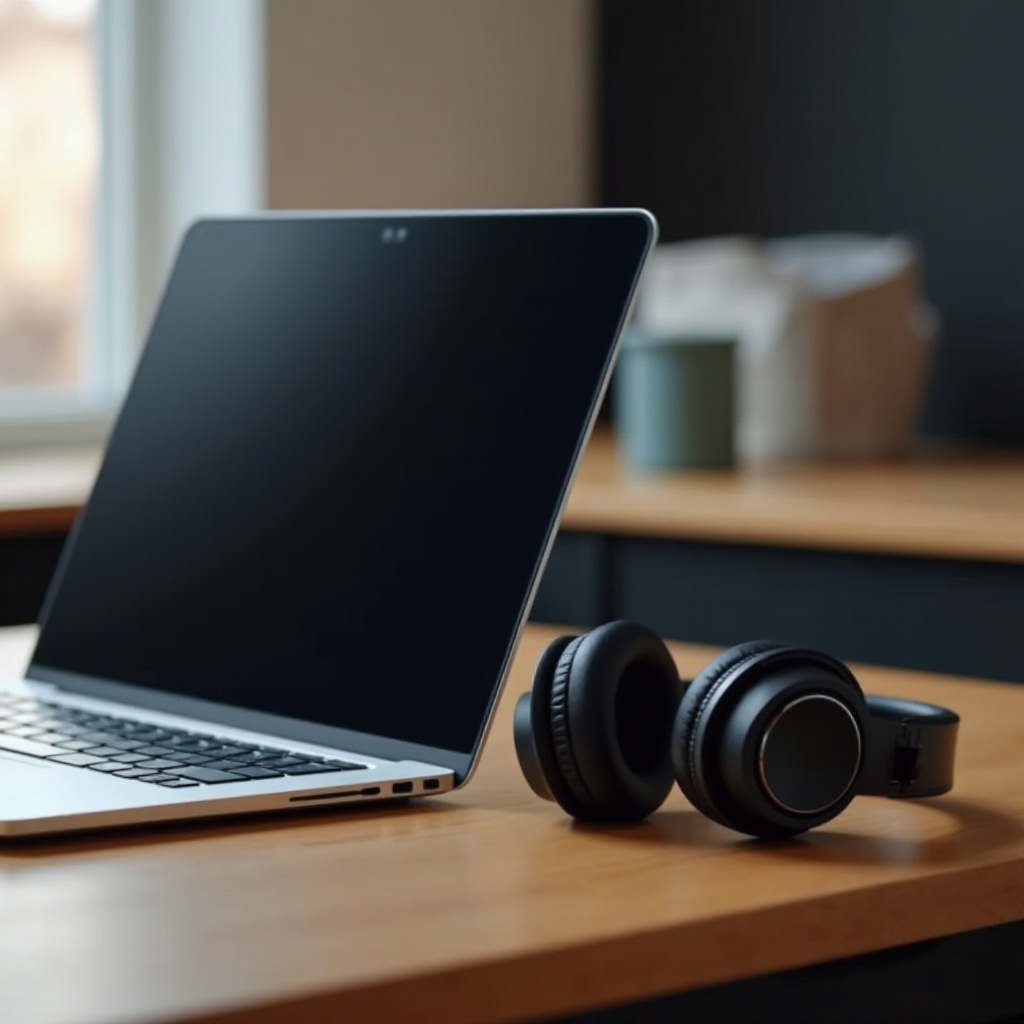
Introduction
Encountering muffled audio on your MacBook can be frustrating, especially when you’re in the middle of an important call or enjoying your favorite music. Often, the sound becomes distorted, making it challenging to hear clearly. This comprehensive guide outlines clear steps to diagnose and fix muffled audio issues on your MacBook, whether they stem from software settings or require more advanced fixes. We’ll also explore ways to enhance audio quality and when it might be prudent to seek professional help. Equipped with these insights, you can restore crisp, clear sound to your MacBook, transforming your listening experience.

Understanding Muffled Audio Issues
Understanding why your MacBook’s audio sounds muffled is crucial for effective troubleshooting. Muffled audio refers to sound output that is unclear, low, or distorted, and it can significantly disrupt your everyday tasks. Recognizing the common causes behind this issue is the first step toward finding a resolution.
Common Causes of Muffled Audio
Muffled audio can stem from several issues:
- Audio Settings: Misconfigured system settings can impact sound clarity.
- Software Glitches: Bugs in macOS updates may introduce audio distortion.
- Dirty Speakers: Accumulated dust or debris can obstruct the speakers.
- Physical Damage: Dropping your MacBook might damage internal components.
Symptoms to Look Out For
Identifying muffled audio symptoms helps in addressing the problem swiftly:
- Noticeably low volume despite high volume settings.
- Sound that appears distant or hollow.
- Distortion during audio playback.
- Persistent audio output issues across multiple applications.
Basic Troubleshooting Steps
Once you’ve identified potential causes, initiating basic troubleshooting can often resolve simple audio issues. Let’s delve into these first measures you can take to mitigate the problem and hopefully restore audio clarity.
Checking Audio Settings
Begin by inspecting your MacBook’s audio settings:
- Go to ‘System Preferences’ > ‘Sound.
- Check ‘Output’ and ensure the correct output device is selected.
- Adjust the balance slider to the middle position.
- Try disabling audio enhancements.
Updating macOS
Keeping your macOS updated can resolve software-induced audio problems:
- Click on the Apple menu, then choose ‘System Preferences.
- Select ‘Software Update.
- If an update is available, click ‘Update Now.
Advanced Audio Fixes
If basic steps don’t work, consider these advanced solutions to tackle more complex audio issues and restore your MacBook’s sound quality.
Resetting NVRAM/PRAM and SMC
NVRAM and SMC reset can resolve persistent audio issues:
- Shut down your MacBook.
- Turn it on and immediately press Option + Command + P + R for 20 seconds.
- Release keys and let your MacBook reboot.
For SMC Reset:
- Shut down your MacBook.
- For MacBooks with T2 chip: Press Control + Option + Shift for 7 seconds.
- Add the power button and hold all keys for another 7 seconds.
- Release all keys and turn on your MacBook.
Running Apple Diagnostics
Apple Diagnostics can pinpoint hardware problems effectively:
- Shut down your MacBook and disconnect attached devices.
- Turn it on and immediately press D until diagnostics begin.
- Follow the on-screen instructions to test hardware.
Enhancing MacBook Audio Quality
To further enhance audio beyond fixing issues, these strategies can help improve overall sound quality, making your MacBook’s audio output more enjoyable.
Using Third-Party Software
Third-party apps like Boom 3D can enhance audio output:
- Provides equalizer settings to customize sound.
- Offers volume booster functionalities.
Trying External Audio Accessories
Consider external devices for an audio boost:
- Use high-quality external speakers to improve sound fidelity.
- Invest in noise-canceling headphones for a clearer audio experience.

DIY Hardware Checks
Should issues persist, conducting DIY hardware checks might be necessary. These steps cover how to safely inspect and clean your MacBook’s audio components.
Cleaning Internal Speakers
Dirt can obstruct speaker output:
- Power off your MacBook.
- Use canned air to gently blow out dust from speakers.
- Carefully wipe along speaker grills with a microfiber cloth.
Inspecting for Physical Damage
Physical damage can impair audio components:
- Examine the exterior for visible damage.
- Check internal speakers by opening the MacBook (only if comfortable and confident).
When to Seek Professional Help
If all else fails, professional intervention is advisable to accurately diagnose and repair complex issues, ensuring lasting solutions.
Recognizing Hardware Failure
Persistent issues might signify hardware failure:
- If you hear crackling or no sound at all.
- If sound works with external devices but not speakers.
Understanding Warranty and Repair Options
Consider warranty status before repairs:
- Check if MacBook is under warranty via Apple’s support site.
- Consult authorized service providers for reliable repairs.

Conclusion
Muffled audio on a MacBook can thwart productivity and limit entertainment value. From verifying software settings to checking hardware components, various solutions are available to tackle this issue effectively. Regular maintenance, like keeping the system updated and audio components clean, can prevent potential mishaps, ensuring lasting sound quality. With these guidelines, most users will resolve muffled audio problems independently, yet seeking professional help remains crucial for addressing severe issues adequately. Regaining optimal audio functionality on your MacBook elevates your user experience, enriching activities such as streaming, calls, and application usage.
Frequently Asked Questions
Why is my MacBook audio still muffled after software updates?
Software updates might introduce bugs. Try resetting your NVRAM/PRAM or verifying your audio settings to resolve remaining issues.
Can I use external speakers to fix muffled audio issues temporarily?
Yes, external speakers can provide a temporary fix while you diagnose and resolve the underlying issue with your MacBook’s internal speakers.
How effective are third-party apps in improving MacBook audio?
Third-party apps like Boom 3D effectively enhance MacBook audio by offering customizable equalizer settings and sound boosting features.
